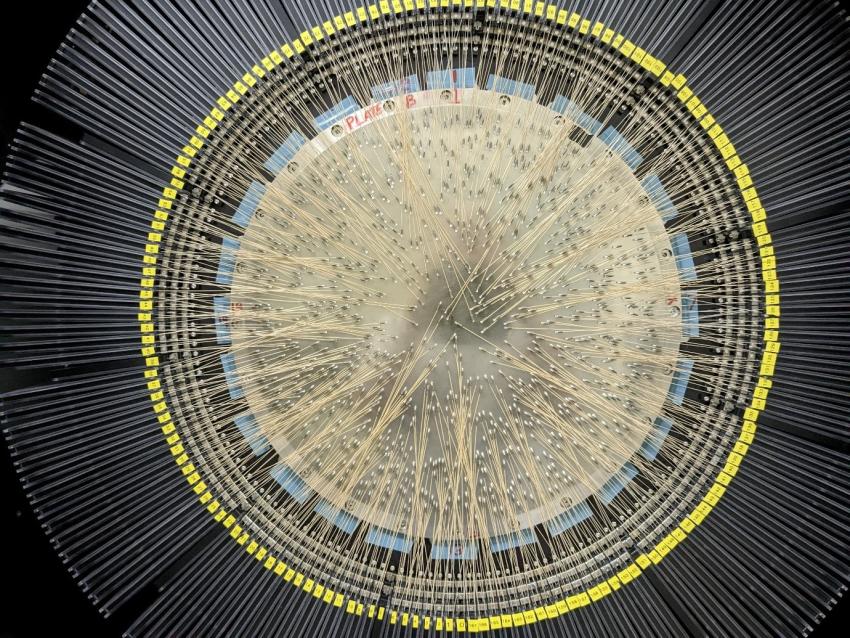This lecture will be a hybrid event meaning that Friends of the RAS will be able to attend in-person or online via Zoom. A ticket link will be emailed the Friends in due course.
You must book a ticket in advance to attend this lecture.
Abstract:
I will describe the development and application of WEAVE: a major facility upgrade for the William Herschel Telescope. 12 years in development, WEAVE uses a pair of robots mounted at the telescope prime focus to deploy up to 950 optical fibres over a two-degree field of view. The fibres (100 kilometres in total) are routed down the telescope to a new high-performance spectrograph mounted in an enclosure on the Nasmyth platform, which provides 16 000 spectral pixels for each target. Representing an improvement of more than two orders of magnitude in the capability of the telescope, WEAVE can deliver spectra for nearly 10 000 targets in a single night of observations.Exploitation of this facility is centred on a 5-year public survey programme covering topics from the dynamics and evolution of the Milky Way to the formation of galaxies in the distant Universe.
Gavin Dalton is a professor of Astrophysics at the University of Oxford and a Fellow at the Rutherford Appleton Laboratory. From his early work in Oxford on the design and implementation of cosmological surveys he moved into the field of instrumentation development, including leading the design of an infrared multi-object spectrograph for the Subaru telescope (FMOS) and VISTA’s wide-field infrared camera. In addition to leading the development of WEAVE, he is currently working on the architecture for a new multi-object spectrograph which will be a 2nd-generation instrument for the Extremely Large Telescope. He has co-authored more than 200 papers in cosmology and instrumentation.


